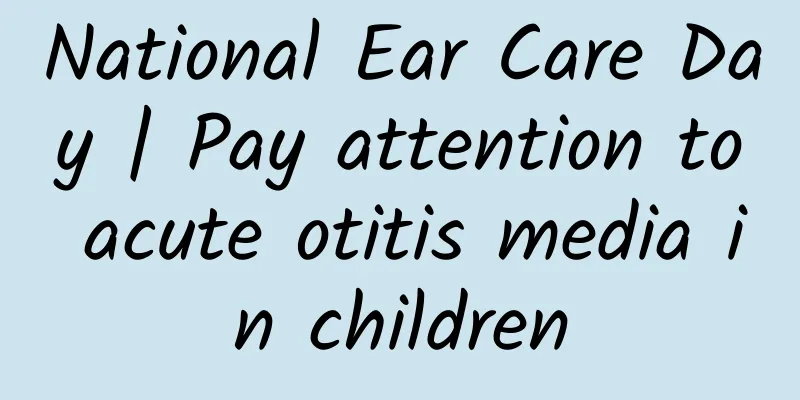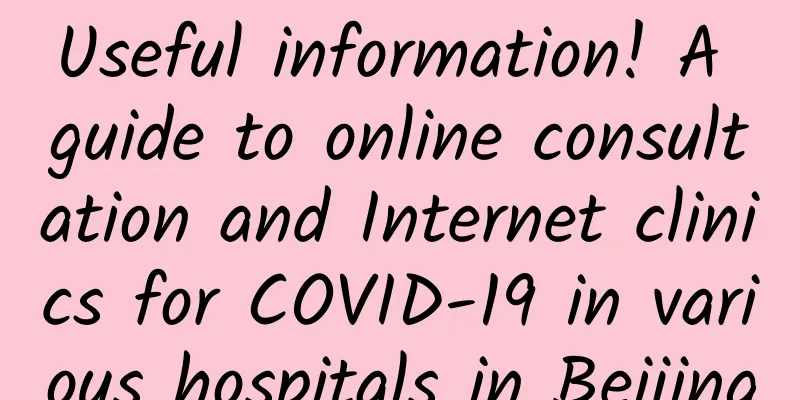National Ear Care Day | Pay attention to acute otitis media in children

|
March 3, 2025 is the 26th National Ear Care Day, with the theme of "Healthy Listening and Unimpeded Communication". This article introduces the most common acute otitis media in children in outpatient clinics. What is otitis media Otitis media refers to inflammatory lesions that affect all or part of the structure of the middle ear (including the Eustachian tube, tympanic cavity, tympanic sinus, and mastoid air cells). According to the "Guidelines for Clinical Classification and Surgical Classification of Otitis Media (2012)", otitis media is divided into acute otitis media, secretory otitis media, suppurative otitis media, middle ear cholesteatoma, special types of otitis media (such as aerotitis media), etc. Understanding Acute Otitis Media Acute otitis media refers to sudden onset of middle ear inflammation within 48 hours, which is divided into acute non-suppurative otitis media and acute suppurative otitis media. The peak age of the disease is 1 to 2 years old. 62% to 75% of babies have suffered from acute otitis media before the age of 1, and about 83% of babies under the age of 3 have suffered from acute otitis media. It is usually a symptom associated with upper respiratory tract infection. Children are usually more susceptible to otitis media than adults, which is related to the structural characteristics of children's Eustachian tubes (short, flat, and thin). Common routes of infection The most common pathogens of acute otitis media are Streptococcus pneumoniae and Haemophilus influenzae. Pathogens are generally transmitted through the following routes. (1) Eustachian tube route: Upper respiratory tract pathogens enter the middle ear retrogradely through the Eustachian tube, mainly including acute upper respiratory tract infection, acute infectious diseases, improper nose blowing, nasal irrigation, swimming or diving in sewage, etc., and improper breastfeeding position for infants (sucking milk in the supine position). (2) External auditory canal-tympanic membrane route: mainly refers to trauma, puncture that does not comply with aseptic operation, and catheterization that allows pathogens to enter the middle ear through a damaged tympanic membrane. (3) Bloodstream infection: very rare. Diagnosis and treatment of acute otitis media The symptoms of acute otitis media mainly include: (1) Systemic infection symptoms are the most obvious. Children will have acute infection symptoms such as fever, chills, and poor appetite. Children often have digestive tract symptoms such as vomiting and diarrhea. Infants and young children shake their heads, scratch their ears, and cry and become restless. Once the eardrum is perforated, the systemic symptoms are significantly relieved. (2) Severe ear pain. After the perforation and pus discharge, the ear pain suddenly decreases. (3) Pus discharge. (4) Hearing loss. (5) Tinnitus. The following auxiliary examination methods are required to confirm the diagnosis of acute otitis media: (1) Electric otoscope or otoscope. Under the microscope, the tympanic membrane can be seen to be congested, bulging, tympanic effusion or tympanic membrane perforation. (2) Acoustic impedance. In the early stage when there is no effusion, it presents a C-type negative pressure curve. After effusion, it presents a plateau-type B-type curve without peaks. In acute suppurative otitis media with tympanic membrane perforation, tympanogram cannot be elicited. (3) Behavioral audiometry (game audiometry or pure tone audiometry) and auditory brainstem evoked potential can clarify the hearing threshold level. (4) Imaging examination. It is not routinely recommended, but temporal bone CT is required for patients suspected of extracranial and intracranial complications. (5) Pathogenic detection. It is not routinely recommended for acute non-suppurative otitis media. However, for acute suppurative otitis media, bacterial culture can identify the pathogen and select the corresponding antimicrobial drug based on the drug sensitivity results. Once acute otitis media is diagnosed, we should promptly adopt the corresponding symptomatic treatment strategies: (1) Antibiotics. For patients with high body temperature, antibiotics should be applied as soon as possible and in sufficient quantities. (2) Ear drops. Antibiotic ear drops, clean the external auditory canal with 3% hydrogen peroxide after perforation. (3) Nasal decongestants. They can reduce swelling of the Eustachian tube opening to facilitate drainage of tympanic fluid. (4) Surgery. For acute otitis media with extracranial and intracranial complications such as retroauricular abscess and sigmoid sinus thrombophlebitis, early mastoidectomy and tympanoplasty are recommended. For patients whose tympanic membrane perforation cannot heal, tympanoplasty should be performed after the ear is dry. How to properly instill ear drops ● Clean your hands thoroughly with soap and disinfectant Use a damp washcloth to clean your ears, then dry them. ● Hold the bottle in your palm for a certain amount of time to keep the ear drops close to body temperature. If the ear drops are unevenly distributed, shake the bottle for 10 seconds to mix the solution. Hold the bottle with the dropper tip facing downward and draw the solution into the dropper. ● Tilt the ear upward or have the child lie on his or her side and pull the ear backward and upward (if using medication for a child under 3 years old, pull the ear backward and downward to open the ear canal). ● Place the correct dose of ear drops into the ear and gently press the tragus to help the ear drops flow smoothly into the ear canal. ● Keep your ears tilted upward for a few minutes or put a piece of soft cotton in your ears. How to prevent acute otitis media Preventive measures: (1) Prevent upper respiratory tract infection; (2) Prevent unclean water from entering the external auditory canal. If unclean water accidentally enters the ear canal, it should be cleaned immediately. Antibiotic ear drops can be dripped into the ear to prevent infection; (3) Avoid blowing your nose on both sides at the same time or sucking back your nose; (4) Avoid digging your ears hard to prevent damage to the external auditory canal and eardrum; (5) Avoid breastfeeding in a lying position. (Author: Chen Wenxia, Department of Otolaryngology and Head and Neck Surgery, Children's Hospital Affiliated to Fudan University) |
<<: National Ear Care Day | Hyperbaric oxygen therapy for sudden deafness
Recommend
Anti-endometrial antibodies negative?
Generally, women need to do a lot of tests when p...
Pictures of menstrual blood
If the color of menstrual blood is not right, the...
30mm of residual fluid in medical abortion is not enough for uterine bleeding
Although the technology of medical abortion has b...
What's the matter if I haven't had my period for more than 40 days?
What is the reason for not having menstruation fo...
Dull abdominal pain 10 days before period
Most women have experienced dysmenorrhea, especia...
Why do you need to recover after childbirth? What are the consequences of not doing it?
The love of beauty is the nature of all women, an...
Why is chess called Xiangqi? Who is the first Chinese female chess grandmaster?
Chinese chess is an entertaining art form. It is ...
Is lower abdominal pain in women necessarily a gynecological disease?
If a woman experiences lower abdominal pain, it m...
What should I do if my wife doesn't want to have children?
Many years ago, the traditional view of marriage ...
What are the good ways to enlarge breasts?
Every woman desires to have a plump breast, so th...
Brown discharge at 15 weeks
Women are in the early stages of pregnancy when t...
What tests should be done during pregnancy?
Pregnancy is an important stage in a woman's ...
Is polycystic ovary difficult to treat?
Polycystic ovary syndrome is a common female dise...
Aspartame's "possible carcinogenicity" controversy continues, why do we have such a special liking for sweetness?
On July 14, 2023, the assessment report on the he...
How to treat bad leucorrhea
As we all know, leucorrhea is one of the physical...









